 Henry D. Higgins was one of the earliest settlers of Mishawaka Indiana. Born on his father’s farm near Syracuse New York in 1822, Higgins was a grandchild of a Revolutionary War veteran who emigrated to America from England.
Henry D. Higgins was one of the earliest settlers of Mishawaka Indiana. Born on his father’s farm near Syracuse New York in 1822, Higgins was a grandchild of a Revolutionary War veteran who emigrated to America from England.
His father, William Higgins, was raised by an uncle in New York, and worked a wagon maker, farmer, and painter. He was also a veteran of the War of 1812.

As a child Henry received a public school education and apprenticed as a carpenter. With this father as an example, Henry learned the values of hard work, determination, tenacity, and perseverance.
At the age of 24 Henry married Nancy Barnes, and the two of them moved to Mishawaka two weeks later. In Mishawaka, Henry engaged in the painting vocation, focusing his business on carriages, signs, and houses.
In 1849 gold was discovered at Sutter’s Mill, and the nation was struck with gold fever. Higgins, like many other industrious Americans, decided to try his luck at prospecting and moved to California in 1850.
Unsuccessful with his mining efforts, Higgins returned back to Mishawaka a year later, and opened a jewelry business.
In mid-19th century America, jewelers didn’t just specialize in precious metals, rings, and gemstones. Oftentimes these craftsmen also practiced clocksmithing and optometry. Much of the same expertise and materials needed to make jewelry, were also the same skill-sets necessary to build clocks and fabricate eye-wear. Higgins’ new jewelry venture was no different.
For the next decade Higgins’ proprietorship prospered. As the town of Mishawaka grew, so did Higgins’ business.
In 1864 Higgins expanded his business interests. With his son Charles, the two opened a dental practice and began to fabricate false teeth, bridges, and other appliances. The addition of a dental business was a natural progression; Like jewelry-making, optometry, and clocksmithing, much of the required expertise and know-how was the same.
During the next 9 years both businesses flourished. However on June 19, 1873 all of that changed. Shot by an employee at their dental practice, his son Charles was accidentally killed. Shortly thereafter, Higgins’ shuttered the operation and refocused all of his energy on his original jewelry store.
In 1881 Higgins hired Joseph de Lorenzi, a recent immigrant from Prussia as a jeweler’s assistant. Sometime later, de Lorenzi married one of Higgins’ daughters. In 1894 Higgins retired, and de Lorenzo succeeded ownership. For another 12 years the business continued operation under de Lorenzo’s proprietorship.
Numismatic Specimens
H.D. Higgens issued 19 different varieties of Civil War tokens during the early and mid-1860s. Like other Civil War storecards of the time, the tokens were issued as change to customers, and had a face value of one-cent.
Pursuant to George and Melvin Fulds’ catalog, the varieties are listed below:
Below are two H.D. Higgens’ Civil War tokens. The first specimen is cataloged as Fuld IN630A-2a and is Choice Extra Fine. It has a rarity rating of R-4 on the Fuld Rarity Scale. It is plain edged and struck in copper.
The second specimen is cataloged as Fuld IN630A-13a. Also struck in copper, it has a rarity rating of R-5 and is Choice Very Fine.

Aaron Packard ![]()
Notes and Sources
-
Standard Catalog of United States Tokens 1700-1900 Fourth Edition, Russell Rulau, Krause Publications, ©2004
-
U.S. Civil War Store Cards Second Edition, George & Melvin Fuld, Quarterman Publications, ©1975
-
South Bend and the Men who Have Made it, Tribune Printing Company, 1901, pgs.425-426
-
Pictorial and Biographical Memoirs of Elkhart and St. Joseph Counties Indiana, Goodspeed Brothers, 1893, pg.295
-
A History of St. Joseph County Indiana Volume 2, Timothy Edward Howard, The Lewis Publishing Company, 1907, pg.791,884
-
History of St. Joseph County Indiana, Chapman, Chas. C., & co., 1880, pg.817
-
Library of Congress Digital Archives
- New York’s Crystal Palace & The H.B. West Tokens - November 6, 2019
- Edward Aschermann’s Cigar & Tobacco Tokens - November 2, 2019
- George T. Hussey & His Special Message Tokens - October 30, 2019



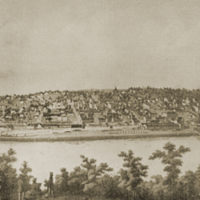
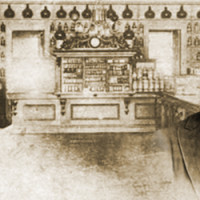
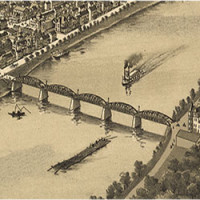
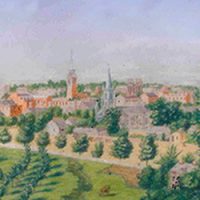
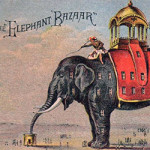
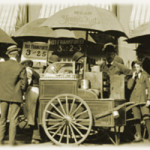
Wonderful article on my Great Great Great Grandfather. We have some of his personal belongings and many pictures of him. A few of his coins are still with us as well.
I just found this on here–I see you wrote this message 4 years ago. I have a H D Higgins stick barometer. Was doing research on it and found the article here. Would send you a picture of it if you like.
Nancy Kirk
nancyjane@mvtel.net
Nancy–I also have a Higgins barometer. I would like a pic of yours & will send you one of mine. Maybe there is a difference. — Wayne Stafford nenit_stafford@yahoo.com
Nancy–I also have s Higgins barometer & would like to compare it to yours. Pls. advise & best wishes..–Wayne Stafford—Fort Wayne, IN (260)747-7784
H.D.Higgins I have one with a cross, a star, a cross under Jeweler above optician, Mishawaka no IND need info.
member CWTS
Hi Ron –
It appears you’re describing die #630A-4 (from 2nd edition) or #23190 (from 3rd edition). It should be paired with reverse die #1003, which is a French Liberty Head. Fulds list two varieties in their 2nd Edition: IN630A-4a (copper) and IN630A-4b (brass). The 3rd edition under Ostendorf’s name is likewise. The 3rd edition lists R-7 rarity for both the copper and brass varieties; Since rarity estimates in the 3rd edition came from Hayden and Tanenbaum, they’re likely R-7 indeed.